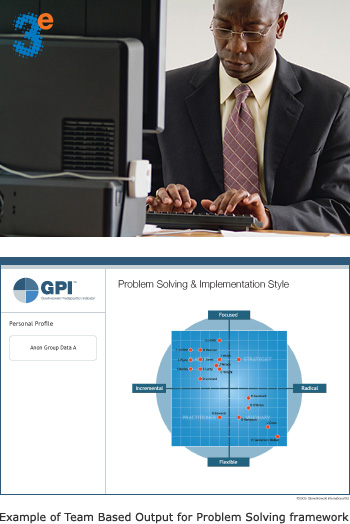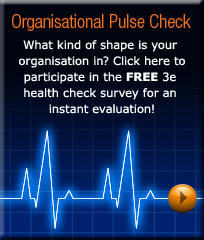The 3e Navigator for CEOs and Senior Executives
3E Performance have officially launched the ‘3e Navigator’ for CEOs and senior managing directors. Designed specifically for new CEO appointments the 3e Navigator is a step-by-step process to assist smooth migration... read more
Glowinkowski Predisposition Indicator™

The GPI™ framework is based on sound theoretical research around the Big 5 concept used by other familiar tools and is presented in a practical style.
It has been designed for use in an organisational setting, providing feedback relevant to specific situations at work such as Problem Solving, Implementation style, Communication and Inter-personal style. GPI™ also reviews Feelings and Self Control and provides highly valuable data in the context of career preference, recruitment and selection, performance and development, i.e. talent management and succession planning. It also provides valuable insights into team dynamics and team performance.
Competencies and Predispositions
Competencies are: “Characteristic behaviours associated with successful organisational performance”. They are the behaviours that you see people exhibiting.
Predispositions are: “Underlying preferences or natural behaviours that people possess through their personality traits”. They cause people to approach a situation in a particular way: “Behaviour is a function of situation and personality” - (Kurt Lewin).
It can be can be stressful and debilitating when a situation causes a person to ‘act out of character’. It ultimately affects the effectiveness of that person’s performance within an organisation.
The GPI™ Tool
The GPI™ is a questionnaire that is completed online, which takes about 30 minutes.
The GPI™ presents its output data in a highly compelling visual manner, making use of non-pejorative terminology. The data is illustrated on three principal feedback frameworks that consider:
- Problem Solving and Implementation Style
- Communication and Inter-personal Style
- Feeling and Self-Control
The stylistic representation of each principal framework comprises two axes forming a four quadrant model. In Problem Solving and Implementation, an individual’s preferred thinking style is married to their preferred approach to doing tasks. In communication and Inter-personal Style, an individual’s preference to be with others or by themselves is married to their teaminess. In Feelings and Self-control, the association between the degrees to which individuals feel okay about themselves is made to the extent to which they control their emotions.
GPI™ for Teams
GPI™ data can be presented in aggregated form for teams, e.g. Senior Executive team, which enables such groups of individuals to understand each other better, particularly In terms of promoting open and powerful dialogue about their respective natural strengths and development needs. Thus the team member presenting a highly innovative idea will appreciate that their team comprises members whose natural style is for change initiatives to occur in ‘smaller steps’ rather than dramatic, strategic ones. Accordingly they can present their ideas to suit others’ in ‘their tastes’. Equally, they will be better placed to gain contributions from those who prefer to be quiet and contain those who are more effusive and not permitting ‘air-time’ to those more reserved team members.
The data also displays, in quite vivid depictions, what might be the potential strengths and weaknesses of a team. For instance when most of the team members aggregate in a particular quadrant, it says something of their ollective strength but at the same time also highlights areas of their collective vulnerabilities where there are no team members with such natural predispositions represented. Such information can also be used to help teams see how they can leverage off each others strengths to make the team more effective and address challenges in their team performance.





